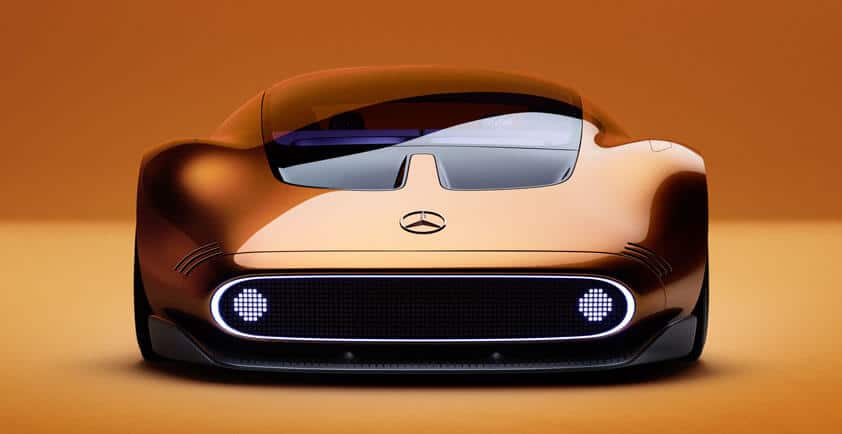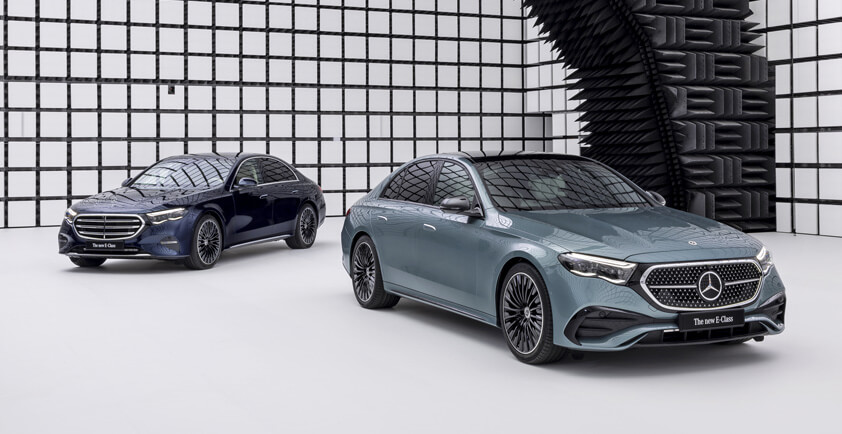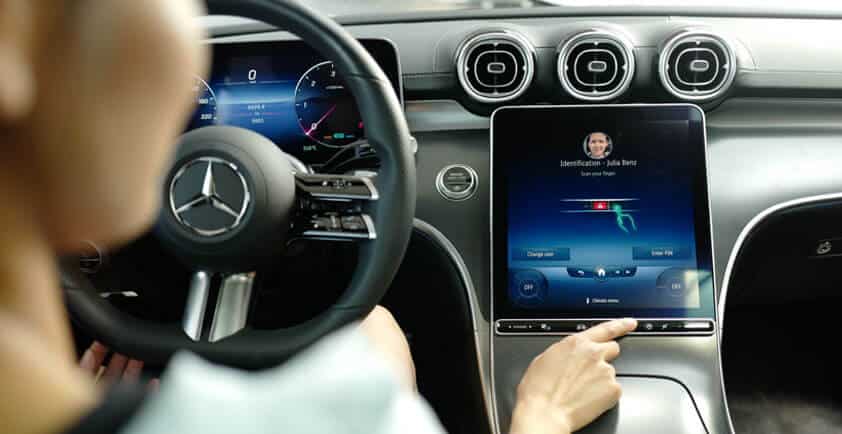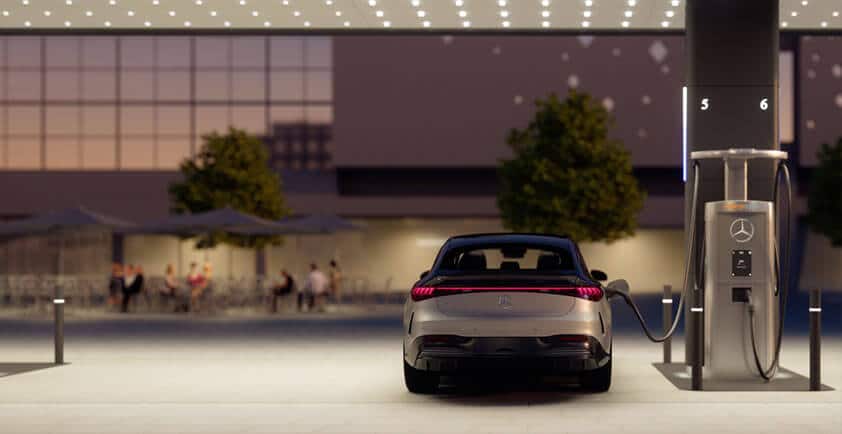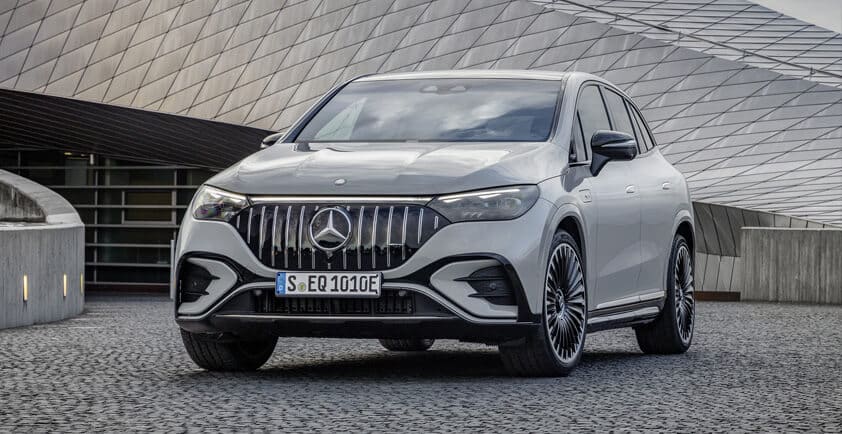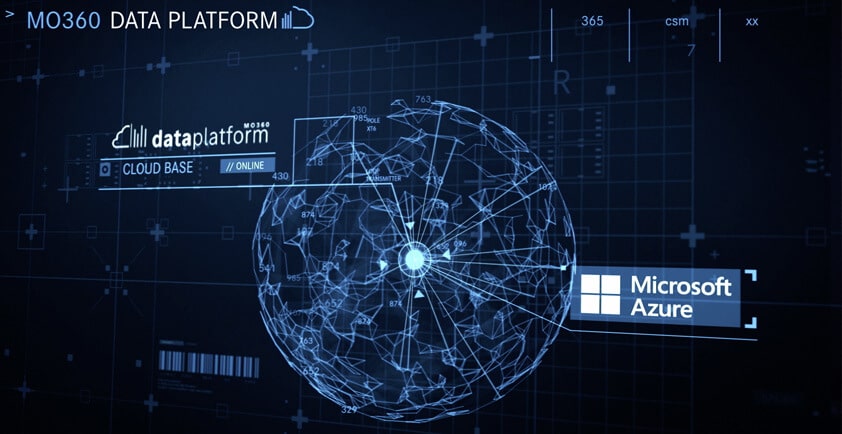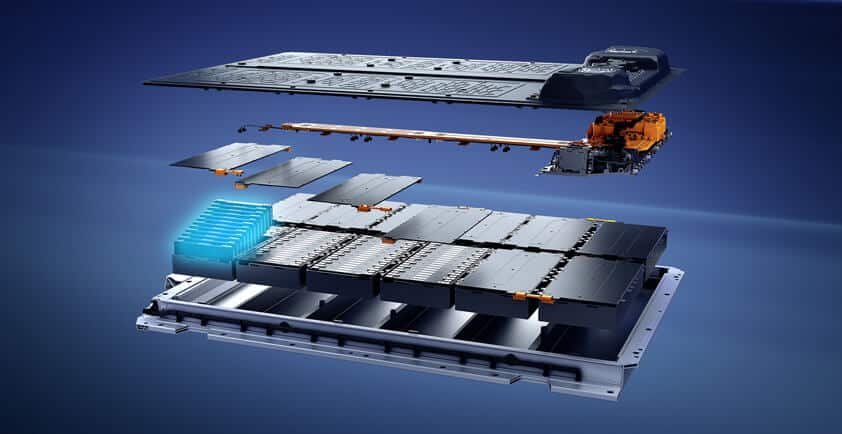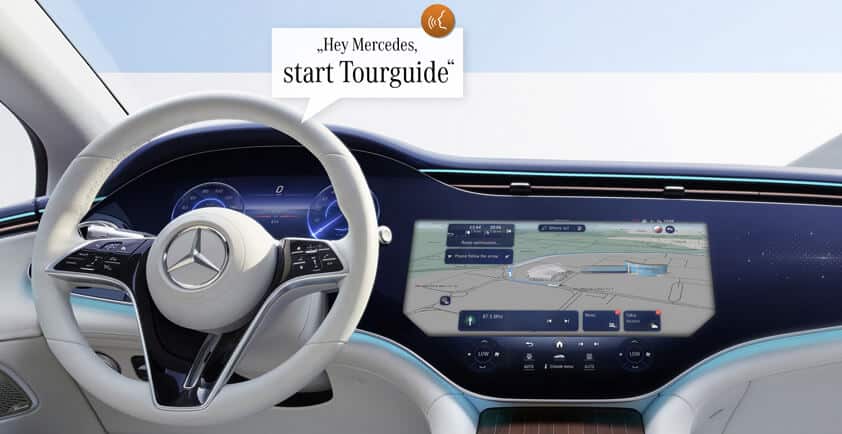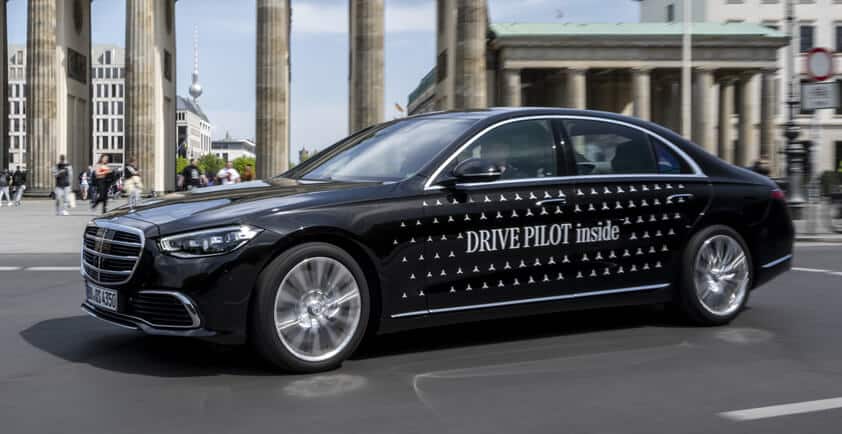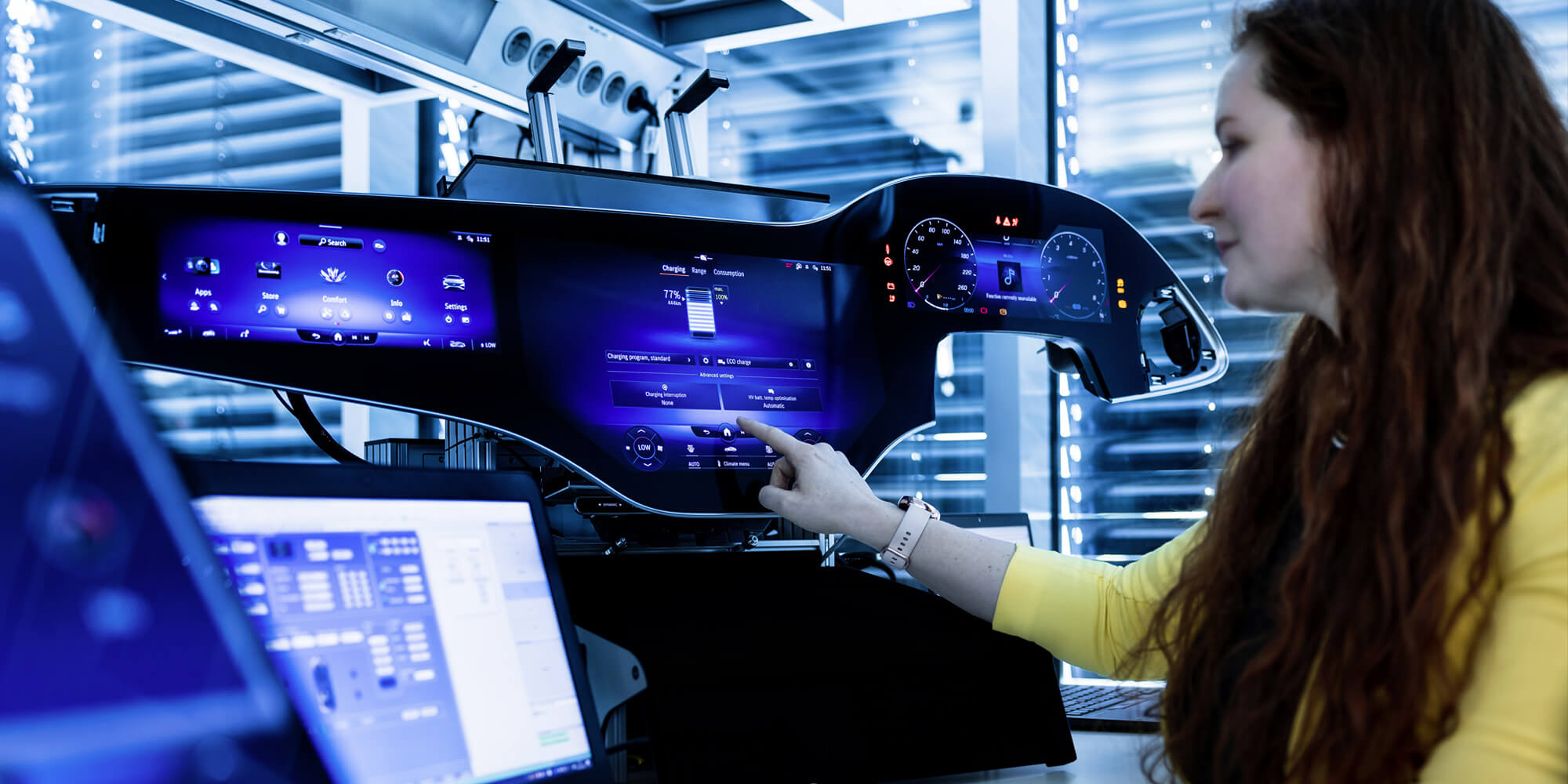
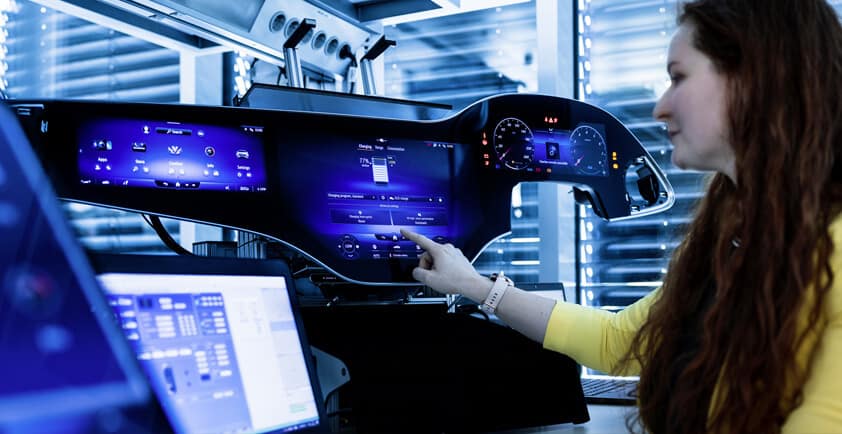
MERCEDES-BENZ OPENS THE ELECTRIC SOFTWARE HUB, A SOFTWARE INTEGRATION FACTORY AT THE SINDELFINGEN SITE
>> Some 1,100 employees work cross-functionally under one roof on the electric and digital future of Mercedes-Benz.
Stuttgart/Sindelfingen. Mercedes-Benz aims to be a leader in both electric driving and vehicle software. To accelerate this development, the company has invested more than 200 million euros in the Electric Software Hub at the Mercedes Technology Centre (MTC) in Sindelfingen. Numerous software, hardware, system integration and testing functions are brought together under one roof. With this step, Mercedes-Benz is intensifying its approach of cross-functional collaboration.
The Electric Software Hub accelerates the transformation of Mercedes-Benz. This is where a strategic pillar of the company manifests itself: "Lead in electric drive and car software". From 2025, all new vehicle architectures will be exclusively electric. Mercedes-Benz takes a holistic approach with regard to vehicle software, ranging from basic research and development to the coding of software. Around 1,000 new jobs are currently being created for software developers in Sindelfingen alone. Up to 2,000 more jobs are currently being added in the global R&D network. The Electric Software Hub brings together the two key strategic topics for the future of Mercedes-Benz and strengthens the role of the Sindelfingen site as a central development and qualification hub. To this end, the company has invested over 200 million euros.
"The Electric Software Hub is an epicentre of our research and development and at the same time closely networked with the worldwide production sites. This is where key aspects of the future of Mercedes-Benz become reality - especially our own MB.OS operating system. Cars are among the most complex products in general. The hardware and software are decoupled and must work together perfectly. We ensure this in the Electric Software Hub. It is our software integration factory," says Markus Schäfer, Member of the Board of Management of Mercedes-Benz Group AG, Chief Technology Officer responsible for Development and Procurement.
Faster and more efficient development
With increasing digitisation, the control units in the vehicle are taking on ever more complex tasks - from infotainment and driving assistance systems to the electric drive. The integration of all components is thus increasing in importance. This process is highly complex. This is all the more true as vehicle development is no longer finished at a certain point. Cars in customer hands also receive continuous software updates with new and improved functions. The Electric Software Hub offers decisive advantages in this new vehicle world: Some 1,100 experts from 19 cross-functional departments work together in closer physical proximity than ever before. Together with the expansion of digital testing procedures, this increases both the pace and the quality of the integration processes. The intensive interlinking of the disciplines in one building makes the Electric Software Hub exceptional. It stands for simultaneous engineering and seamless integration at its best.
The new building has 70,000 square metres of space spread over eight levels. The inside of the Electric Software Hub reflects the entire electrics/electronics integration process of vehicle development. The employees ensure that all hardware and software components created in research and development work perfectly and interact seamlessly. From top to bottom - from code to product - software and hardware enter further and further into the vehicle until they are integrated into vehicle prototypes in the lower spaces. During this phase, there is an in-depth exchange with the vehicle plants worldwide so that new developments can be optimally transferred to series production.
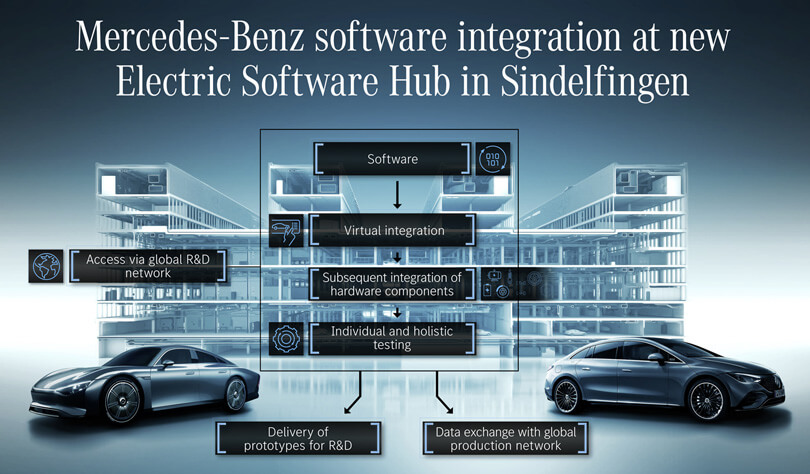
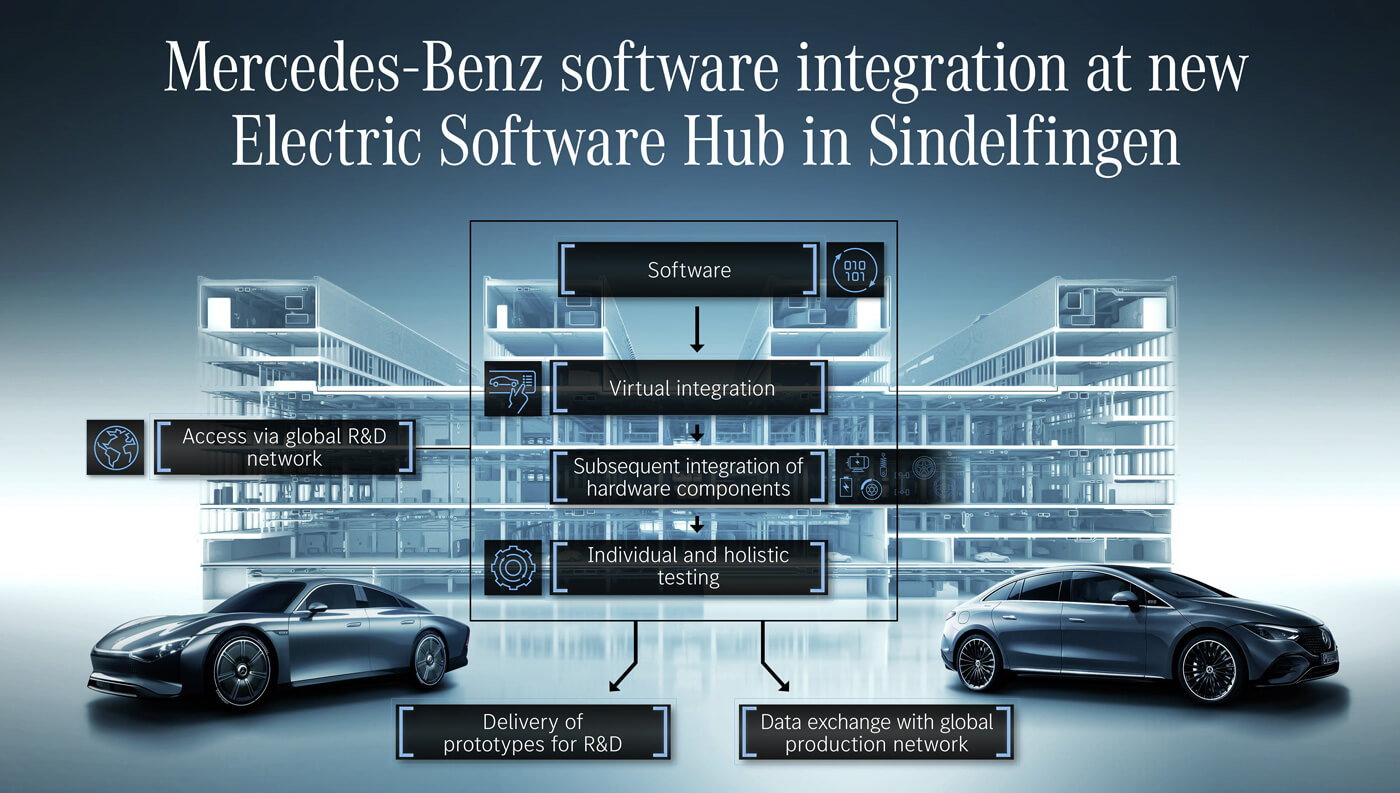
Shortened development time through the use of state-of-the-art test technologies
The upper floors house the software code creation and pre-integration labs. Here, the experts first use virtual technologies and simulation to test whether the various software components interact correctly with each other and whether the vehicle functions are implemented correctly - this is called integration. They use state-of-the-art methods for validating electrics/electronics. For example, components and control units are tested fully automatically in a virtual vehicle - the technology used is called hardware-in-the-loop. For this purpose, highly specialised test benches are used in the Electric Software Hub, which are operated for various model series under development. In principle, only the electronics with the software to be tested are real, the entire rest of the vehicle as well as the environment are simulated.
Even in very early phases of software development, i.e. before the first control units are available as hardware, specific simulation methods can be used to test the vehicle functions. All these procedures aim to drastically shorten development times through high automation and to reach a high level of software maturity as early as possible.
Even the complete simulation of a test in the vehicle is possible in the Electric Software Hub through the technology of the "digital test drive". This involves moving and testing a virtual vehicle in a fully simulated environment in the same way a real test drive would - only this "test drive" takes place in a laboratory on the sixth floor of the Electric Software Hub.
A key concept of this building is the close proximity of all test facilities and test benches of the software integration (including the vehicle) - and also, of course, of the engineers who operate them. This makes an important contribution to shortening the development time by optimally supporting integration.
Short distances promote fast results
The drivable prototypes are located on level 4. What are called retreat areas are grouped around meeting rooms. This enables the teams to evaluate together immediately the data obtained during the tests. Since the entire building is networked via fibre optic technology, the enormous amounts of data generated during these tests can be read in a very short time. The production stage and start-up validation are also fully integrated in the building. With the initial start-up of the electrics/electronics (E/E) of the prototypes and a successful maturity-level management system, the Mercedes specialists subject the entire development process to a constant reality check. They also validate the subsequent series production process, including testing requirements and procedures, in the Electric Software Hub. Here, the development pre-integrations work hand in hand in one building with the production E/E integration centre, from the component to the vehicle.
The three lower levels are specially designed for laboratories, workshops and test benches. This is where the diverse global challenges that Mercedes-Benz vehicles have to meet can be reproduced. The vehicle test benches allow tests at temperatures from -30 to +50 degrees and speeds of up to 250 km/h. In addition, the Electric Software Hub has 250 charging points. This means that a large number of different vehicles can be charged simultaneously at any time. This also speeds up testing and increases the pace of development. There are different charging standards worldwide for the charging infrastructure, which the systems in the Electric Software Hub replicate. This also applies to the particularly fast High Power Charging. Mercedes-Benz can thus ensure that software, digital applications, electric driving and charging in customer hands function stably and correctly always and everywhere.
Innovative building architecture and work culture
From the outside, the Electric Software Hub presents itself entirely in the current architectural design idiom of Mercedes-Benz. The large, transparent glass cube emphasises the idea of openness through the design of the façade; the anthracite louvres symbolise sporty luxury. The communication lines on the individual levels stretch the entire building length of 130 metres. The conditions are ideal for the Mercedes-Benz me@work approach: There is no separation between workshops, laboratories and offices. Lots of glass, modular spaces and an open architecture enable collaborative working without physical boundaries. Flexible workplaces promote exchange among colleagues from different areas. Staff members have a total of three accessible and furnished inner courtyards at their disposal on level 6. On the one hand, they serve as break areas. If you want, you can simply move the workstation outdoors thanks to mains connections. Details like these are part of the long-term strategic factory planning at Mercedes-Benz. The company developed this approach a decade ago and has been implementing it consistently ever since. At the Sindelfingen site, the new buildings for the driving simulator, the Vehicle Safety Technology Centre, the climate and wind tunnel and Factory 56 correspond to it to date.
